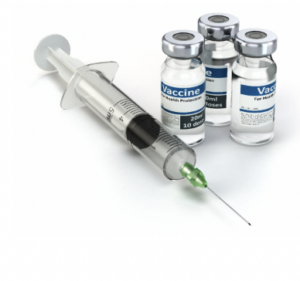- CMS: Medicare Program; Implementation of Prior Authorization for Select Services for the Wasteful and Inappropriate Services Reduction (WISeR) Model
- Public Inspection: CMS: Medicare Program: Implementation of Prior Authorization for Select Services for the Wasteful and Inappropriate Services Reduction Model
- CMS: Secretarial Comments on the CBE's (Battelle Memorial Institute) 2024 Activities: Report to Congress and the Secretary of the Department of Health and Human Services
- HHS: Patient Protection and Affordable Care Act: Marketplace Integrity and Affordability
- HRSA Announces Action to Lower Out-of-Pocket Costs for Life-Saving Medications at Health Centers Nationwide
- Public Inspection: HHS: Patient Protection and Affordable Care Act: Marketplace Integrity and Affordability
- Increased Risk of Cyber Threats Against Healthcare and Public Health Sector
- Eight Hospitals Selected for First Cohort of Rural Hospital Stabilization Program
- Announcing the 2030 Census Disclosure Avoidance Research Program
- CMS: Medicare Program; Hospital Inpatient Prospective Payment Systems for Acute Care Hospitals and the Long-Term Care Hospital Prospective Payment System and Policy Changes and Fiscal Year 2026 Rates; Requirements for Quality Programs; and Other Policy Changes; Correction
- CMS: Medicare Program; Hospital Inpatient Prospective Payment Systems for Acute Care Hospitals and the Long-Term Care Hospital Prospective Payment System and Policy Changes and Fiscal Year 2026 Rates; Requirements for Quality Programs; and Other Policy Changes; Correction
- CMS: Medicare and Medicaid Programs; Contract Year 2026 Policy and Technical Changes to the Medicare Advantage Program, Medicare Prescription Drug Benefit Program, Medicare Cost Plan Program, and Programs of All-Inclusive Care for the Elderly; Correction
- CMS: Medicare and Medicaid Programs; Contract Year 2026 Policy and Technical Changes to the Medicare Advantage Program, Medicare Prescription Drug Benefit Program, Medicare Cost Plan Program, and Programs of All-Inclusive Care for the Elderly; Correction
- CMS: Medicare Program; Prospective Payment System and Consolidated Billing for Skilled Nursing Facilities; Updates to the Quality Reporting Program for Federal Fiscal Year 2026
- CMS: Medicare Program; FY 2026 Hospice Wage Index and Payment Rate Update and Hospice Quality Reporting Program Requirements
Pennsylvania Launches New State Health Improvement Plan Dashboard
The Pennsylvania Department of Health Office of Operational Excellence has published the State Health Improvement Plan (SHIP) dashboard. The dashboard features trends related to overarching SHIP objectives as well as individual objectives organized by workgroup and goal. It includes a list of current strategies and activities being implemented by SHIP goal team members and member organizations.
2023 ACS 1-Year Estimates Released

The latest research brief highlights key findings from the 2023 American Community Survey (ACS) 1-Year Estimates. This report provides updates on Pennsylvania’s demographic, social, and economic trends, covering topics such as household income, housing, educational attainment, and internet access. Additionally, the brief discusses changes in housing burdens across different racial and ethnic groups.
Best Online Health and Safety Practices for Children and Youth Released
 The Online Health and Safety Task Force released a report with recommendations and best practices for safer social media and online platform use for youth. The recommendations underscore the Administration’s efforts to address the ongoing youth mental health crisis and support the President’s Unity Agenda for the nation. Read more and access the report via the press release.
The Online Health and Safety Task Force released a report with recommendations and best practices for safer social media and online platform use for youth. The recommendations underscore the Administration’s efforts to address the ongoing youth mental health crisis and support the President’s Unity Agenda for the nation. Read more and access the report via the press release.
Supreme Court Preserves Abortion Pill Access After Tossing Challenge
Why it matters: It’s the court’s biggest abortion-related decision since overturning Roe v. Wade and ensures that mifepristone — one of the most widely used drugs for medication abortions — will remain available. Click here to learn more.
New Hypertension in Pregnancy Change Package Released
 Visit the Million Hearts website to download their Hypertension in Pregnancy Change Package. This quality improvement guide is full of tools and resources gathered from and tailored for clinical teams caring for pregnant and postpartum women in outpatient settings. Share it with your colleagues and networks. Select at least one change idea to implement and collaborate with others to expand the reach of this important work.
Visit the Million Hearts website to download their Hypertension in Pregnancy Change Package. This quality improvement guide is full of tools and resources gathered from and tailored for clinical teams caring for pregnant and postpartum women in outpatient settings. Share it with your colleagues and networks. Select at least one change idea to implement and collaborate with others to expand the reach of this important work.
House Members Introduce Legislation to Ensure Access and Transparency in 340B Drug Pricing Program

U.S. Representatives Larry Bucshon, MD (R-IN-08), Buddy Carter (R-GA-01), and Diana Harshbarger (R-TN-01) introduced the 340B Affording Care for Communities and Ensuring a Strong Safety-Net Act (340B ACCESS Act). This legislation, H.R. 8574, establishes critical oversight and transparency of the 340B program while providing clear, practical, and achievable solutions to ensure the 340B program can be a force for good in the nation’s health care safety net. The 340B ACCESS Act seeks to capture the policy principles which reflect the consensus of ASAP 340B members and will guide efforts to realign the 340B program in the interest of true safety-net providers and the communities they serve. Here are a few key highlights for those of us not in the weeds on 340B. This legislative solution:
· Protects Community Health Centers’ ability to serve all patients, regardless of their ability to pay, by increasing access to affordable medications and health services for medically underserved communities.
· Restores access to unlimited contract pharmacies, including access to mail order and specialty pharmacies, enabling greater access for health center patients.
· Ensures health centers and their patients have access to affordable medications for prescriptions written by specialty providers.
· Stops “middlemen” (corporations that seek to profit from savings) from taking the savings away from the health center that is providing overall care to the patient and their community.
· Increases transparency and accountability for all stakeholders in the program.
Click here to learn more. Call and email your Representative and ask them to cosponsor this legislation! NACHC is hosting a webinar on June 3 at 3:00 pm to provide additional information about the legislation. Register here.
Mpox Cases on the Rise in Pennsylvania

Mpox cases continue to rise in Pennsylvania and the surrounding states. The Pennsylvania Department of Health (DOH) is encouraging providers to continue to screen all patients with suspected mpox for travel to the Democratic Republic of the Congo (DRC) or recent contact with someone who has traveled to DRC. Providers should be aware of the more stringent infection control measures required for Clade I mpox and are encouraged to follow the CDC guidelines for infection prevention and control for mpox. Outreach, education, testing and vaccination continue to be important. According to DOH, Hispanic men are significantly impacted and there is need for these interventions among the migrant worker population. See mpox toolkit for more information on mpox and promotional materials.
Medicare Telehealth Legislation Takes Another Step Forward

Last week, the House Energy & Commerce Health Subcommittee advanced a two-year extension of Medicare telehealth payment policies to the full Energy & Commerce Committee. The bill, H.R. 7623, the Telehealth Modernization Act of 2024, includes a two-year extension of current policies and would also ensure that Medicare reimburses telehealth visits at the same rate as in-person visits. This payment parity language, along with the rest of the policy extensions, passed the subcommittee by a 21-0 bipartisan vote. The full Committee will consider the bill in the coming months.
ICYMI: Explore HeatRisk Forecast Tool
 In case you missed it: last month, the National Oceanic and Atmospheric Administration and the Centers for Disease Control and Prevention created the nation’s first health-based alert system and heat guidance for clinicians. As part of this effort, the CDC also provides a HeatRisk Dashboard with resources for high-heat days, details on local air quality, and actions to stay safe in these conditions. Finally, the CDC has a site with clinical guidance for heat health, focused initially on treating children with asthma, pregnant women, and people with cardiovascular disease.
In case you missed it: last month, the National Oceanic and Atmospheric Administration and the Centers for Disease Control and Prevention created the nation’s first health-based alert system and heat guidance for clinicians. As part of this effort, the CDC also provides a HeatRisk Dashboard with resources for high-heat days, details on local air quality, and actions to stay safe in these conditions. Finally, the CDC has a site with clinical guidance for heat health, focused initially on treating children with asthma, pregnant women, and people with cardiovascular disease.
HRSA Modifies Definition of Rural for FORHP Grants

Comment by May 28. On April 26th, the Federal Office of Rural Health Policy (FORHP) announced a proposed modification to the definition of ‘rural’ used to designate eligible areas for rural health grants. Because access to needed health care is likely to be reduced when roads are most difficult to traverse, FORHP proposes to modify the definition of rural areas by integrating the new Road Ruggedness Scale (RRS) released in 2023 by the Economic Research Service (ERS) of the U.S. Department of Agriculture. The proposed modifications are based on a data-driven methodology to identify areas with difficult mountainous terrain. All areas included in the current definition of rural would remain included.
